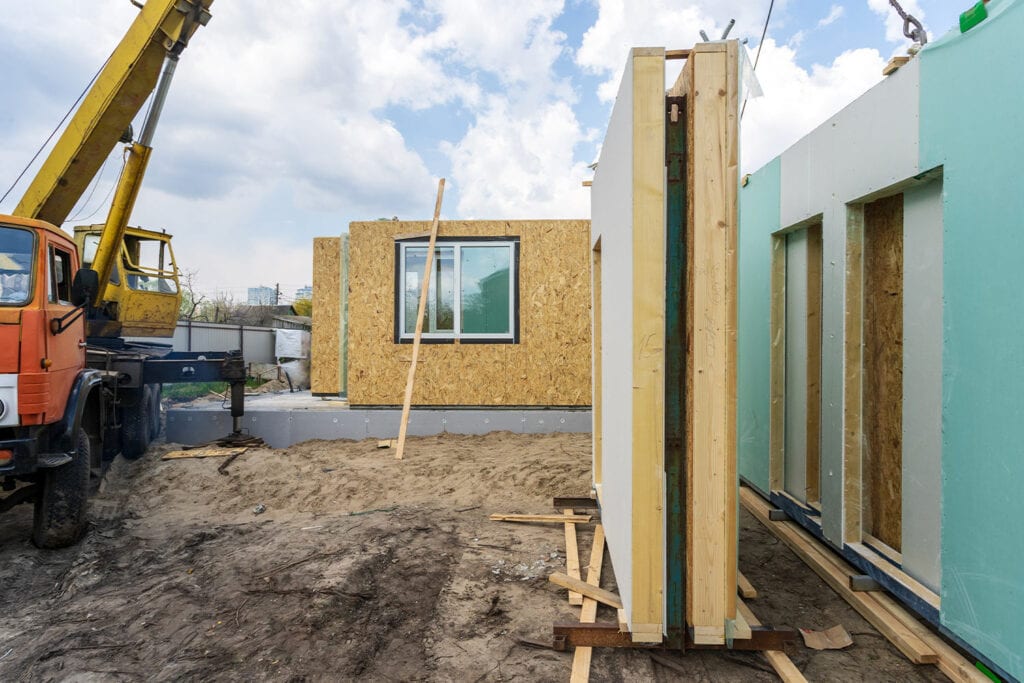Why the AEC industry is lagging behind: five barriers to good data use
Data is king. In every sector, across every industry, the collection, analysis and management of information has never been more important in advancing our understanding of systems and people.
Finance, the government, the creative industries and many others, are embracing technology and data in their work, but other sectors are lagging behind. The AEC (Architecture, Engineering and Construction) industry is one of them.
“Technology moves fast but building projects generally don’t. It is tricky to keep pace,” says Tom Hopton, associate at Buro Happold and expert in building management systems and technology. “The building industry is a difficult industry for technology and data awareness, and requires effective means of stakeholder collaboration, engagement and education. We have to really elevate the importance of technology and crucially, data.”
So, what is holding AEC back in terms of embracing data in buildings? This article, alongside the accompanying podcast on the subject, looks at the five major issues facing the AEC industry and its ongoing relationship with data, with a special focus on operationalising building data.
1 – Fancy sensors are great, but they need to be managed properly
We all use the word ‘data’, but what does it actually mean? Numbers? Statistics? Observations? Data, according to the Oxford dictionary, is “facts and statistics collected together for reference or analysis”. A more complex interpretation is given as “the quantities, characters, or symbols on which operations are performed by a computer, which may be stored and transmitted in the form of electrical signals and recorded on magnetic, optical, or mechanical recording media”. According to these definitions, what seems to make data tangible, is not the mere collecting of the information, but how it is analyzed.
Building management systems, a term used here in its wider context of any data generating system in a building, will use data in various ways. Sensors record how and by which route people enter and leave buildings, as well as control aspects like the heating and lighting. People movement is tracked, giving managers the option to adjust the heating and cooling according to where people are congregated. The data is “managed” to help users and owners improve performance, save energy and optimize how building space is used.
As more buildings and systems become connected or “smart”, more data is collected, giving constant, accurate feedback on all aspects of building use, making sure it is being used in an optimal way, with no wasted energy, water or light.
All too often we go back to buildings and we see that control systems aren’t commissioned correctly and that has led to inefficiencies.
Tom Hopton
Sounds perfect, doesn’t it? Except that it isn’t, according to Tom. “All too often we go back to buildings and we see that control systems aren’t commissioned correctly and that has led to inefficiencies. Why is that? It is about exposing the value and importance of specifying not only the right systems but the delivery of those systems, which maximises the potential of data beyond the native system needs.”
So a building may contain the “smartest” sensors in the world, and yet, if that data is not exposed, curated and analysed correctly, it becomes worthless.
2 – Clients and engineers need to pay just as much attention to data as they do to physical assets
A lack of understanding about building management systems is often a problem throughout the design process. As Tom explains in his article in the CIBSE Journal, Data with destiny – BMS protocols, “consultant engineers must understand the discipline, and be able to communicate opportunities to clients effectively. They must be competent enough to understand the system integration and include programming and software in design specifications. If these are not robust, the design will be put under cost pressure at the tendering stage and key outcomes may not be realized”.
The client must not only be informed in a comprehensive way about the technology landscape available to them, and the benefits they will bring, but should also be educated in the management of those systems. How could the data be used to benefit them and the building’s users? As Tom says, the importance of controls and building management systems must be emphasized. If they aren’t, the costs of the BMS system will be queried and perhaps discarded at a later stage in the building process.
The importance of controls and building management systems must be emphasized. If they aren’t, the costs of the BMS system will be queried and perhaps discarded at a later stage in the building process.
Tom Hopton
Educating everyone involved, from clients to engineers, seems to be key to advancing the use of data in buildings. Buro Happold is tackling this in a number of ways, as Digital Services Director Irfan Soneji explains, “We are actually building a touchy-feely innovation centre – a digital hub where customers can come and touch and feel a lot of this technology – a physical smart meter, a video wall, a smart kiosk or a smart bench. We are hoping that if clients have something tangible to look at and feel, it will go some way towards better understanding.
This new innovation centre may be on hold until we can welcome people back into the office post Covid, but the people at Buro Happold realise the importance of showing our clients the physical technology that goes into a smart building, and most importantly, how it will be used.
A need for more controls and integration specialists is also a priority in AEC. The Building Controls Institute Association has set up a BEMS apprenticeship programme to address this skills gap, and Buro Happold is also bolstering their specialists teams with controls, integration, network communication and OT skills.
3 – Transitioning from a traditional to a digital workplace can be challenging
Getting many organisations or capital project managers to embrace data, and understand the benefits of technology is not easy. Remember the move from paper to computers in offices? This shift to a data-led future is even more difficult.
Steven Wood is a “digital transformation specialist” working for Digital Catapult. Having helped multiple companies though this often-painful process, he is all too aware that some companies are far more forward thinking than others. Talking about the “big established ones”, he says, “they are the ones that have the most to lose, and they are the ones that find change the most difficult. The smaller, agile organisations, those with a certain amount of fearlessness and hunger – these are the people who are really innovating with digital technology.”
Stephen believes that the key thing to do is to get these two types of organisations together, as they can benefit from each other’s experiences.
Eduardo Bayod, head of the London office at Fide Partners, a strategy and management consultancy firm is hopeful that things are going to change, purely because of the amount of money being put into smart cities, “If you look at the smart cities slice of the pie, typically those who are spearheading it are in telecoms and software. But if you think of the pie and the spending, nine per cent of spending in smart cities is around connectivity and communications, 20 per cent on software, 32 per cent on hardware. The people in the smaller pieces of the pie are those making the most noise around smart cities.”
4 – People need to become “prosumers”, and understand their energy
With all this talk of data in buildings, it is easy for designers to forget that what gives them purpose, are the people who live and work in them. By engaging them in the digital transformation process, further progress can be made in terms of energy efficiency.
Associate Director for Energy, Phil Proctor, thinks that getting the public to understand their energy usage better is key to reducing energy costs. As people’s habits have changed, with more streaming of television services, less traditional work patterns meaning different patterns in terms of hot water and light, and an increasing number of items that need charging, including electric cars and bikes, it is more difficult for the national grid to manage and provide energy at the right moments in the day. Better data, and a more personalized, consumer-led approach could solve that.
”Traditionally (a building) has been an isolated system – passing the energy down,” explains Phil. “The big component part is what we call passive – that is, there is no intelligence in it. Cables and wires transmit that energy, with no real need for intelligence.
“Going forward now, what we have seen is the need for more intelligence in the systems, at all levels. There are a number of big changes in what a meter could do for example. One way is adding additional intelligence into the network to get it to perform better, and the other way is to involve the prosumer (consumer) to understand what they are using, how they are using it, and even perhaps generate their own.
“You are involving people in the system. In simple terms, you could have a solar PV system on your roof and generate energy from that. You could be using that energy yourself or you could be delivering that into the grid – you have become a prosumer.”
5 – We need to curate data and make it accessible for the public good
“Within building management systems, everyone is working on their own little project and that may be why there is not a unified system.” Eduardo thinks one of the greatest problems in data management in buildings is a lack of unity and cohesion across the industry.
Buro Happold has decided to tackle this. Tom Hopton, alongside industry partners, is promoting the unification of building data and working towards the creation of an industrywide national building data exchange to reveal building performance insights at a national level. Tom believes this will fuel the growth of a competitive and diverse building optimization marketplace and reveal key national insights, with grid operators as just one example. It will also provide evidence-based data for future building projects, as well as act as a key national driver towards the UK’s net zero-carbon target of 2050.
It is widely acknowledged that Building Controls and Building Management Systems (BMS) offer the greatest opportunity for improving building performance.
Tom Hopton
In his paper, Tom states, “It is widely acknowledged that Building Controls and Building Management Systems (BMS) offer the greatest opportunity for improving building performance. Whilst we have seen more efficient building services products and systems, we rarely see these efficiencies in operation due to how equipment is integrated, and how control of equipment is programmed within our BMS.” Exposing these inefficiencies however is challenging. But as Tom explains, as an industry we have adopted open protocols but the curation of this data is often poor, creating messy and unstructured data with no destiny.
“Our Grand Challenge is to create a national building data exchange platform to expose building performance data in an open and virtual marketplace. An open and public data exchange, for the public good,” says Tom. “Such a data exchange will allow building owners and operators and other stakeholders, to access the data, who using experience, processes and digital tools such as ML and AI are able to identify improvements across our national built assets.”
Data is vital to all parts of our industry, with an expanding marketplace to consume this data and turn it into value. By promoting techniques for curation of building data and pushing for industrywide data exchange, Buro Happold is confident the use and scope of good data in our built environment is only going to grow and strengthen.
AEC can do better, and Buro Happold will make it happen
Wider knowledge sharing, elevating the value of data at all stages in a project, and legislation to standardize data curation and create a data exchange. What is clear is that there is huge, untapped potential in what a truly data-led built environment can achieve. Cost and energy saving are merely the beginning, and the shift to a digitally-built and operated built environment is not going to easy.
“None of these changes are small,” said Steven. “The nature of digital technology is that it is highly disruptive, so if you are going to get into this game, you are going to have to be disruptive and disrupted at the same time. And that is a scary thing. A lot of organisations are going to have to make some really big changes.”
It seems data really is king, and there’s no going back. Now is the time to embrace the challenges it brings, and realise the benefits.







